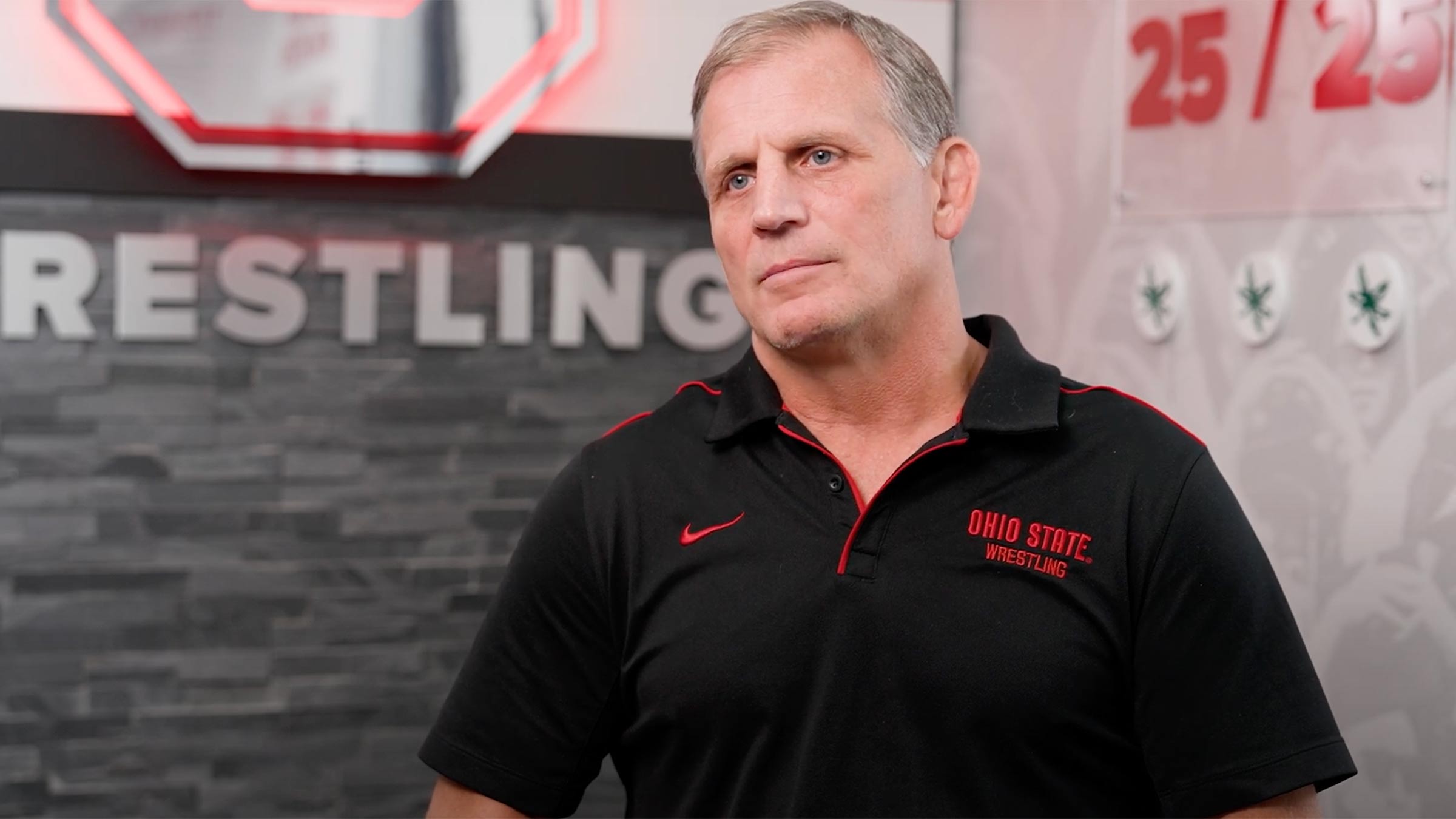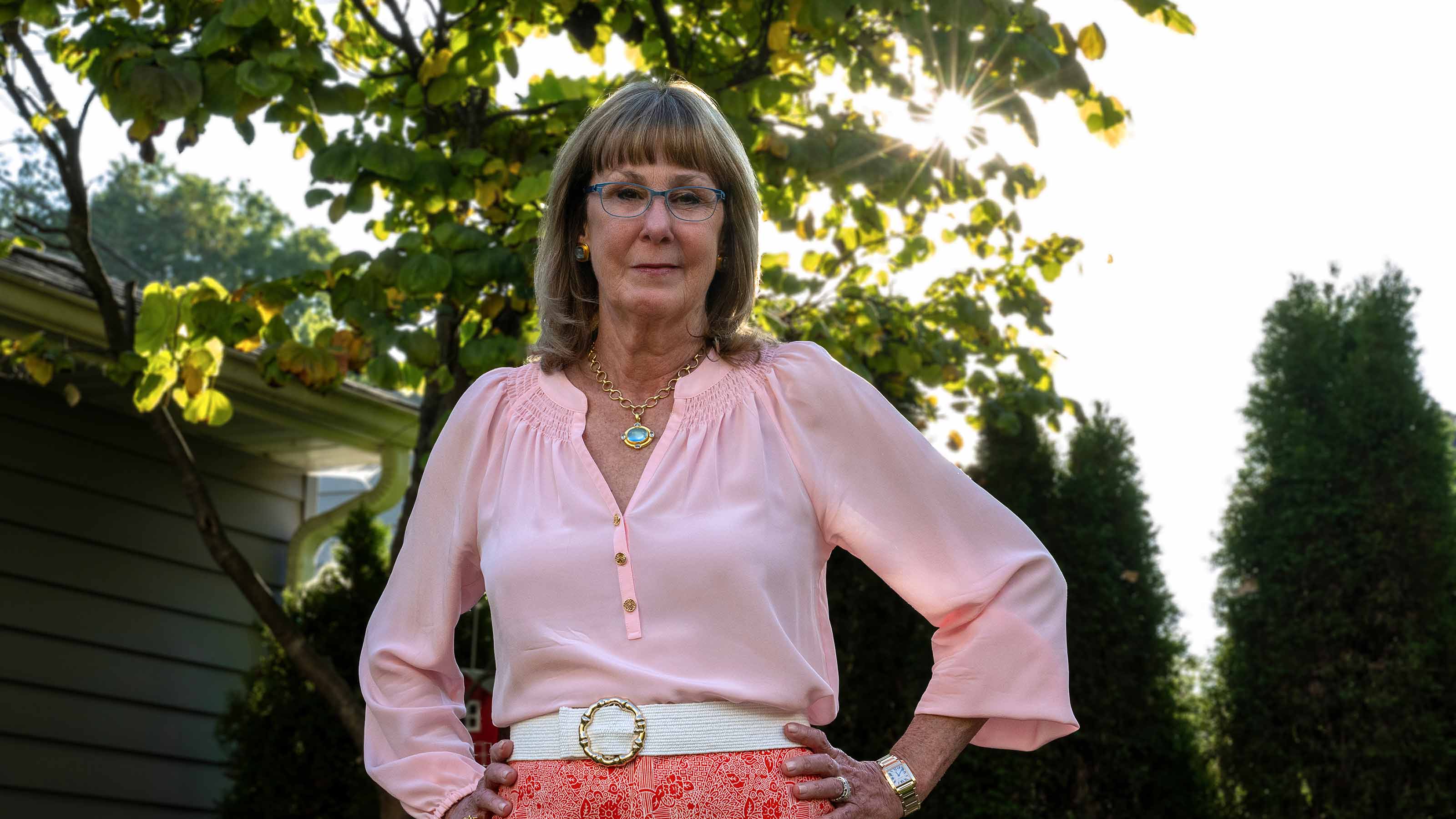Surgeons save coach’s leg through unique orthopedic and plastic surgery partnership
Ohio State’s head wrestling coach is back on the mat after complex orthoplastics surgery.
Some might call it a miracle that Tom Ryan survived the impact of his SUV rear-ending a semitrailer parked on the shoulder of the highway.
It looked like it might take another to prevent the Ohio State head wrestling coach from losing his lower left leg after he was rushed to the trauma center at The Ohio State University Wexner Medical Center.
As orthopedic trauma surgeon Angela Collins, MD, PhD, put the pieces of his knee, shin, thigh and hip bones back together, she realized the wound to the leg was just too massive. There wasn’t enough tissue left to cover it.
Ryan’s body would likely struggle to heal properly, leaving him vulnerable to infection and amputation.
Dr. Collins didn’t want to take that gamble.
She knew plastic surgeon David Nash, MD, was staffing a nearby operating room, so she asked him to come take a look.
Together with Ryan’s family, the two surgeons came up with a plan to give the left leg a fighting chance. Dr. Collins would spend several hours mending the broken bones, with Dr. Nash covering them as best he could. The next day, Dr. Nash would perform a free flap procedure, transplanting a piece of skin and tissue from the right leg to protect the left leg.
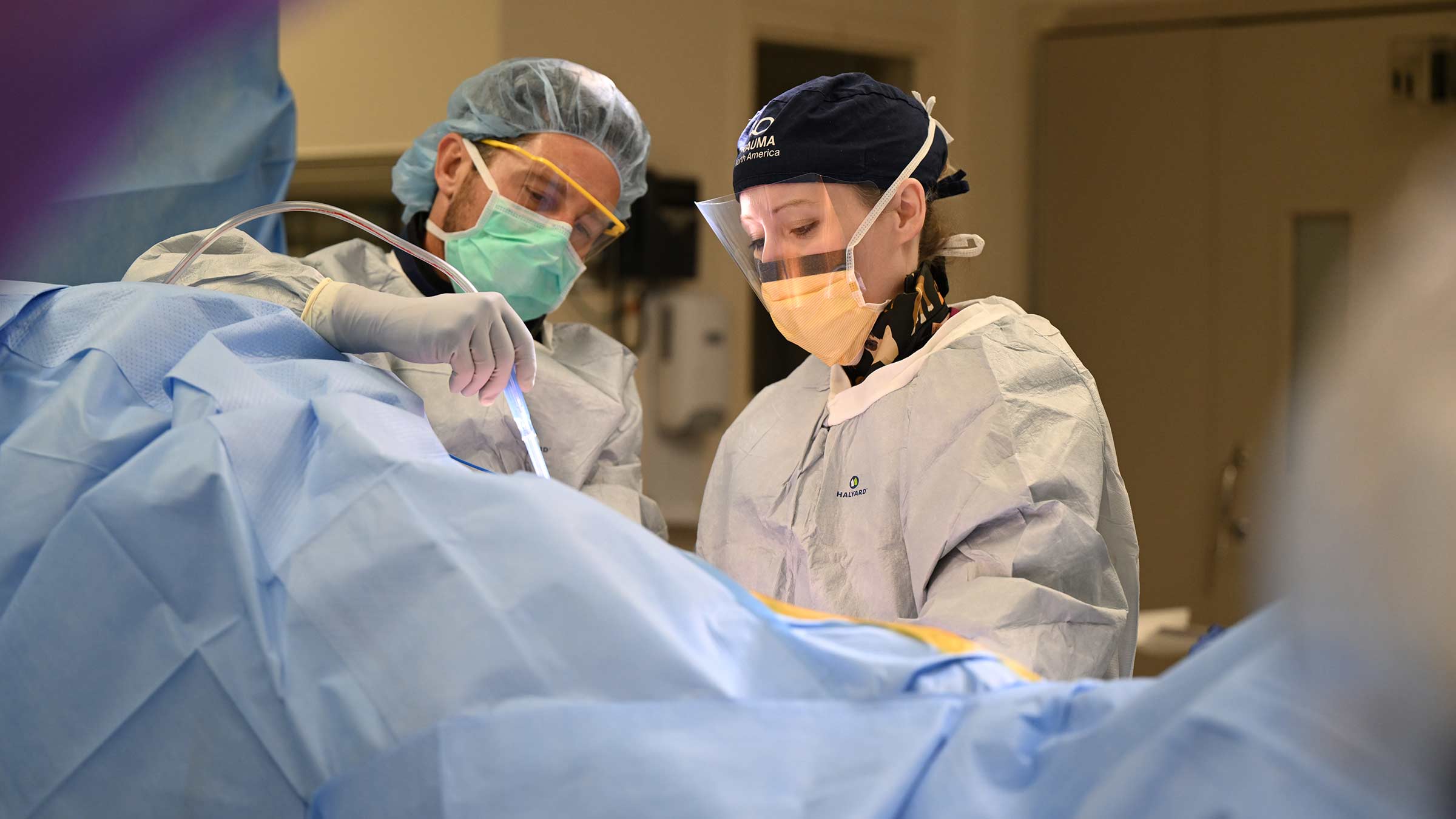
A living tissue transplant for orthoplastics surgery
A free flap is no simple procedure, involving multiple specially trained team members.
Dr. Nash specializes in what’s called microsurgery, which he describes as a transplant with tissue taken from the same person, routinely used for rebuilding lost tissue for patients who have had cancer or sustained trauma injuries.
“They reconnect all the blood vessels, so they’re basically giving the patient a new living piece of skin. It’s pretty phenomenal,” Dr. Collins says.
Ryan’s procedure lasted 12 to 14 hours, and Dr. Nash likens it to “robbing Peter to pay Paul.”
The flap taken from his right leg contained two tiny blood vessels, each about the thickness of a credit card. After moving the flap, the vessels were sewn into existing vessels in the left leg, guided by a microscope and placed with stitches thinner than human hair.
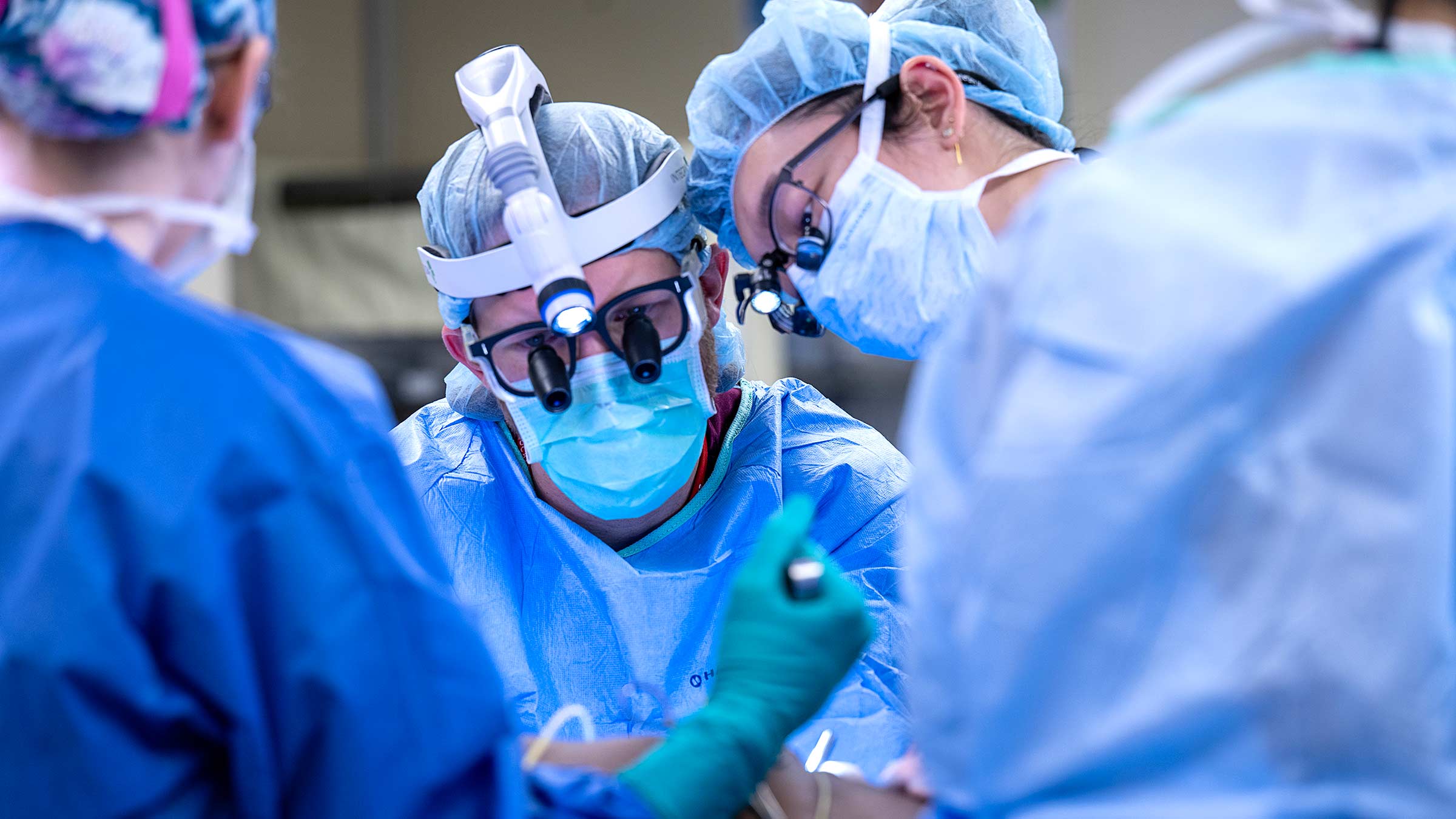
Waking up to legs he didn’t recognize after orthoplasty
Ryan remembers waking up to legs he didn’t recognize, along with a shoulder injury and stitches in his head. The pain was physical, mental and emotional.
“You’re like, ‘What just happened?’” Ryan recalls.
Ryan had been on his way to The Ohio State University for an early morning workout with colleagues on April 23, 2024, when his SUV, traveling at about 65 miles per hour, struck the semitrailer.
He remembers the sounds of steel bending. He remembers telling the rescue team he was in pain.
After that, his memory goes blank. His family and medical team helped fill the gaps, reassuring him that the plan to save his leg had been the right one.
“It clearly was, because this is incredible stuff,” Ryan says, grateful that Dr. Collins and Dr. Nash had been working in neighboring operating rooms the morning of his crash.
“It was brilliant to put them together, like cookies and milk, like peanut butter and jelly,” Ryan says.
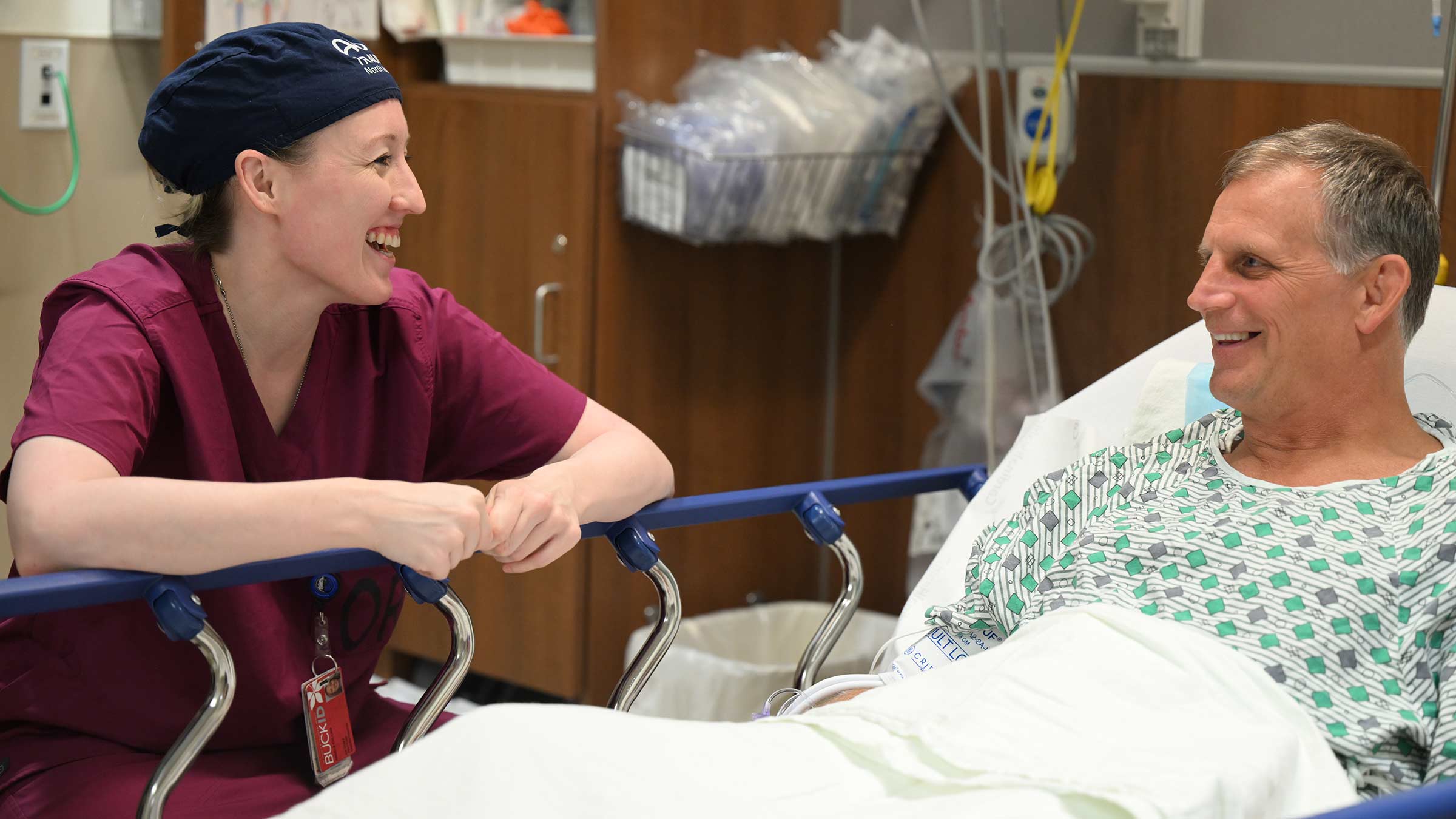
Taking on the most complex orthoplastics cases as a team
The surgeons say the collaboration that happened with Ryan is the norm for the Ohio State Wexner Medical Center orthopedic and plastic surgery teams, who meet routinely to discuss complex cases.
“This is what we do every day here: We call it orthoplastics. We really have the opportunity to do a lot of special things,” Dr. Collins says.
The goal with trauma patients is to bring plastic surgeons in at the beginning, before a patient is facing complications that can lead to infection, multiple surgeries, loss of function or loss of a limb, Dr. Nash says.
The surgeons also say many people visit the group for another opinion, and a chance, after being told they need an amputation.

“We’ve got a group of really passionate orthopedic surgeons and plastic surgeons that like tackling difficult problems,” Dr. Nash says. “We’re basically friends who get to hang out and do cool stuff together. We’re all rowing the boat in the same direction, and we believe in what each other can do and know that the patients only benefit from that.”
After orthoplastics surgeries: a new type of struggle
While patients do benefit from orthoplastics, it isn’t always easy. Dr. Nash says many cope with mental health struggles long after surgeries and physical or occupational therapy sessions.
Ryan, who had known stifling devastation long before his injuries, thought he was equipped to handle what life might throw him.
His 5-year-old son Teague died in 2004 after suffering a heart attack at the dinner table. At that time, Ryan had three other young children to focus on, to parent, to help. He and his wife received support from friends, they went to counseling. He channeled some of his grief into workouts.
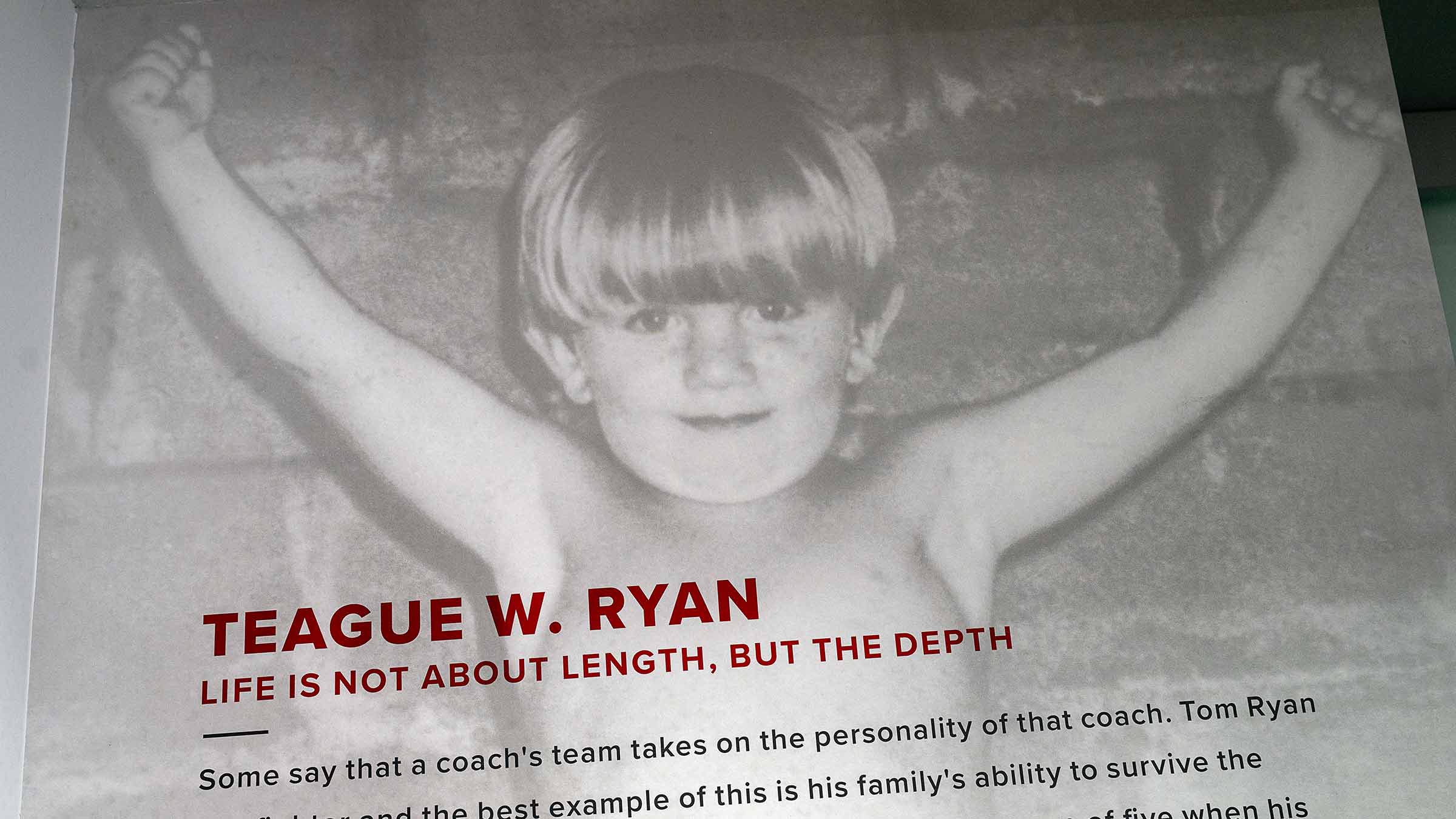
But his own near-death experience 20 years later, lying in a hospital bed for 12 nights — it was something altogether different. His way of life was threatened.
“This has been really challenging for me. One thing that’s gotten me through it is the competence, love and honor of the people around me,” Ryan says.
“These doctors, I believe in them so much, people who have been there and done that. I’m confident that I’ll be back to doing the things that I want to do,” he says.
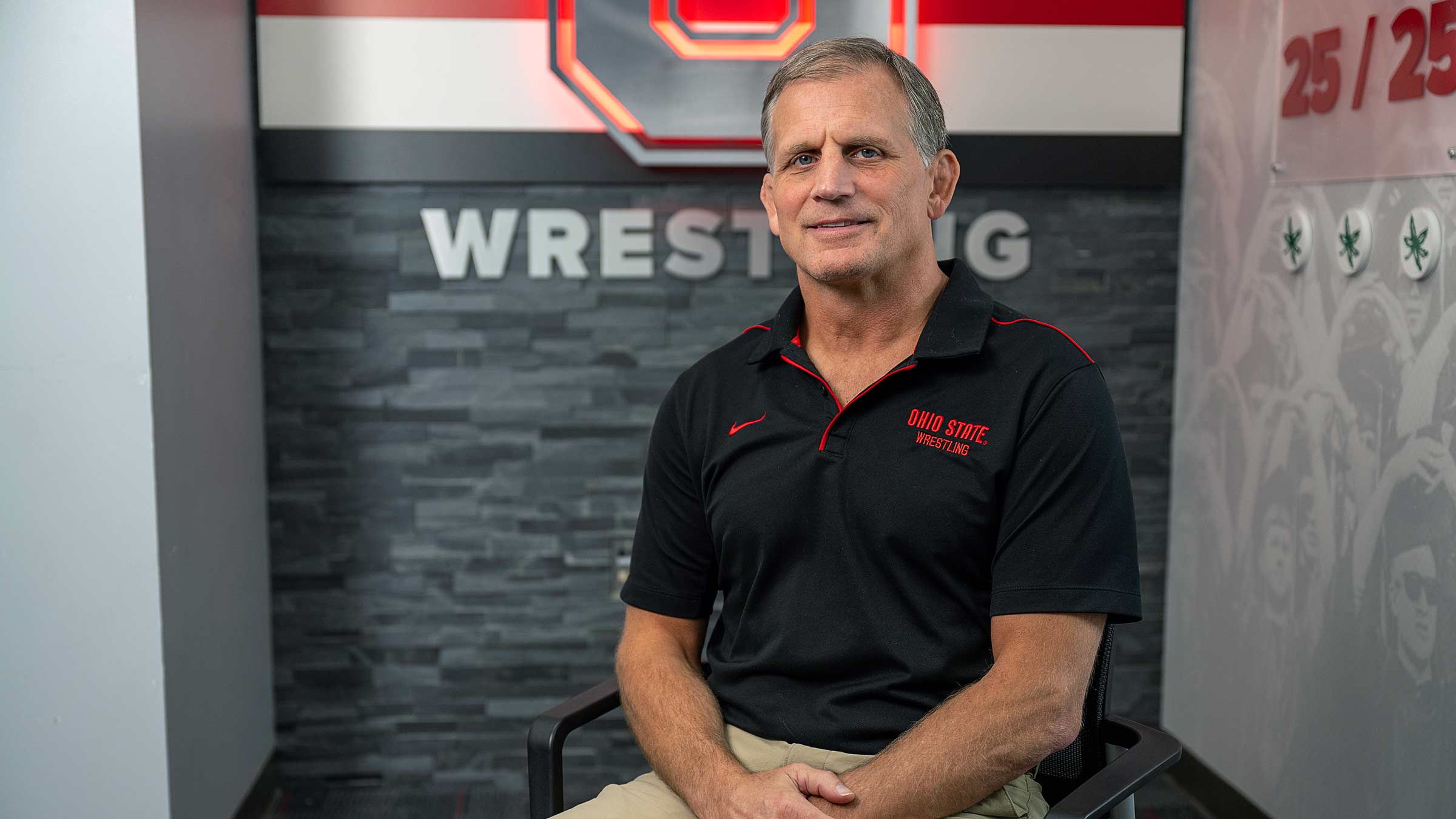
His short-term goals have been to walk normally without pain, to play in the yard with his 3-year-old grandson and to get back on the mat with his wrestling team.
Long-term, when his grandson is old enough, Ryan wants to be able to take him to the mat — and win.
Giving back what’s taken away: recovering from orthoplasty
These are the types of things Dr. Collins and Dr. Nash consider from the outset as they develop treatment plans.
For Ryan, a free flap will help cushion the knee so he can work toward those goals of making it to the floor with wrestlers and with grandchildren.
Some patients are not as active as Ryan, or they may not want to undergo multiple surgeries. Dr. Nash says he spends a great deal of time with patients, explaining their options and what life might be like based on the chosen procedure.
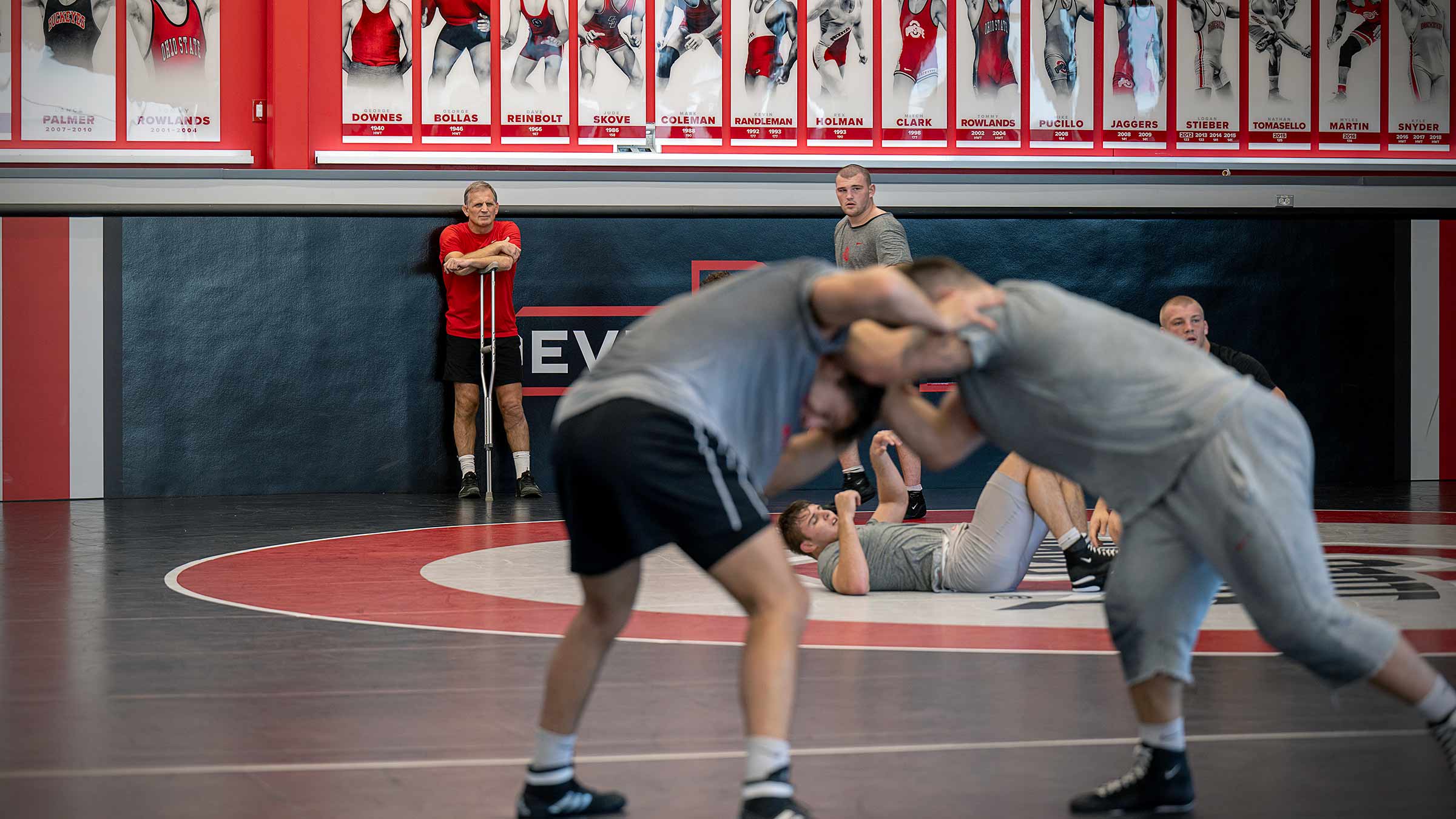
“My biggest hope is getting people back to living their lives, whether that be treating them because they have a new fracture or someone who is on their 10th opinion, and we’re able to give them back what’s been taken away,” Dr. Collins says.
Honoring the orthoplastics team’s compassion and expertise
Ryan says he received this type of personalized care from his entire medical team, including tireless nurses and encouraging staff members who cleaned his hospital room.
It’s a type of treatment he wanted to celebrate, and he honored health care workers at a wrestling meet in fall 2024. At a separate meet later in the season, Dr. Collins and Dr. Nash served as honorary coaches.
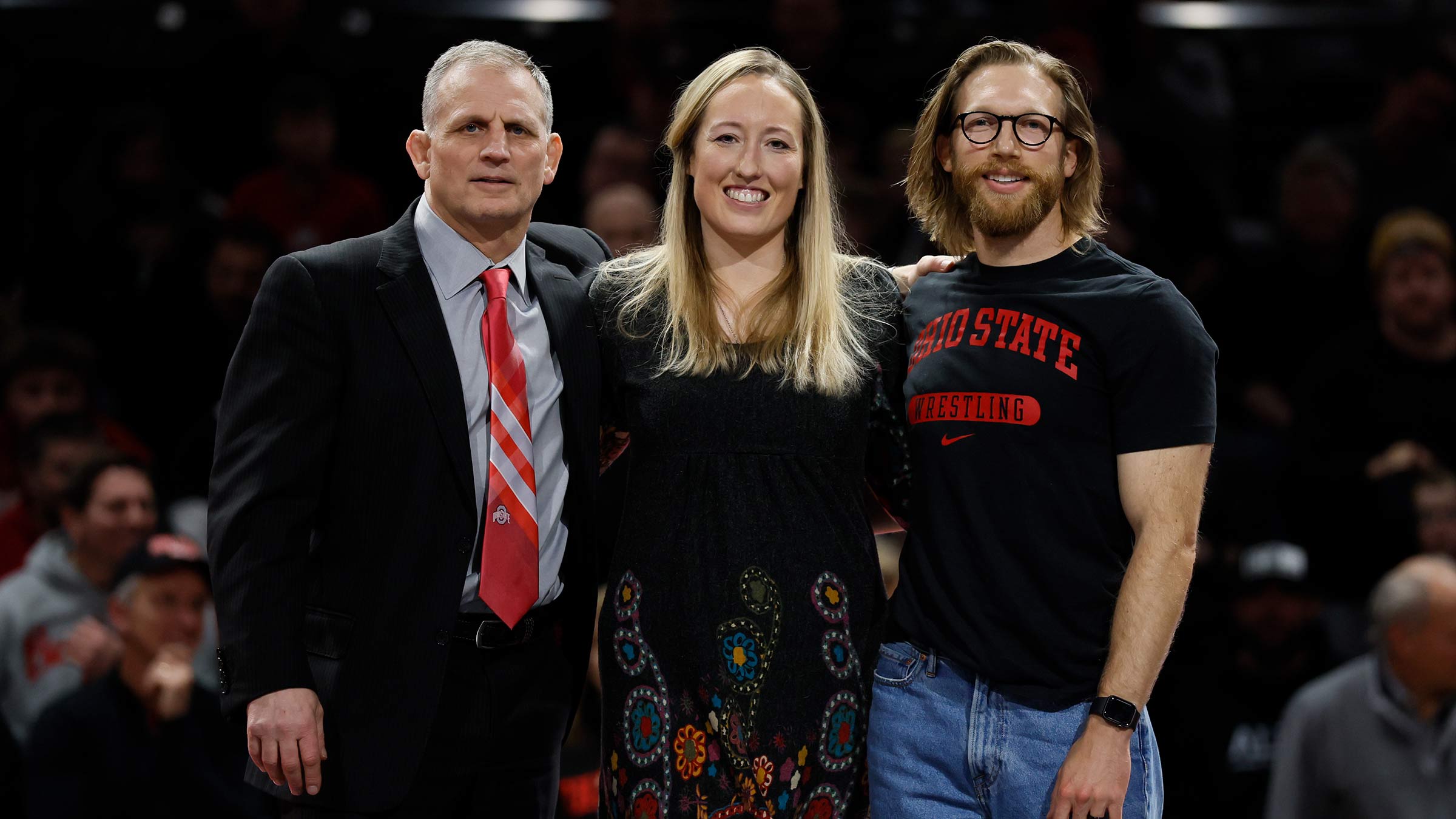
“They’re incredible servants. I felt their compassion, I felt their patience, I felt their love, I felt their expertise,” Ryan says. “When you’re around people like that, you just want other people to know that these are the type of people who make the world a better place.”
Ryan, who has been a wrestling coach for more than 30 years, came to Ohio State in 2006 because he wanted to coach in a place that valued the sport.
“I never thought, ‘Well, let me move to Columbus, because if I’m in an accident, the best minds on the planet are going to be eight miles away,’” he says. “I’m just so grateful that when the accident happened, they were ready for me. I really believe they saved my leg and maybe saved my life.”

Advanced care for complex injuries
Ohio State experts employ the latest surgical techniques and technologies to help wounded patients when others can’t.
Learn more about restorative surgery
Complete care after traumatic events
Our team specializes in personalized, state-of-the-art treatments to address multiple injuries and broken bones, from diagnosis through recovery.
Learn more about orthopedic trauma care


